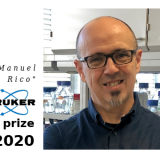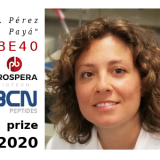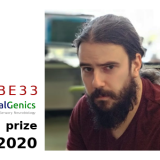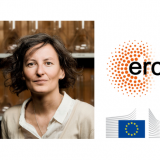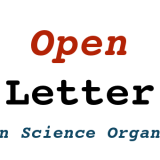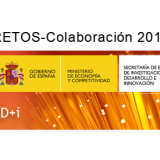Allosterism versus mechanical coupling: Truncated KCNH channels defy the classical mechanism of voltage-dependent gating

Voltage-gated potassium (Kv) channels are crucial regulators of cell excitability by mediating selective K+ flow across the plasma membrane. These proteins switch on and off with changes in membrane voltage and have three crucial functional elements: an ion conduction pore, a gate that controls the ionic flow, and a voltage sensor that triggers opening and closing of the gate. It is well established that these elements correspond to a modular structure of the protein, with a permeation module (transmembrane helices S5 and S6 and their intervening loop), surrounded by a voltage-sensing module (transmembrane S1-S4). However, the mechanism responsible for converting the changes occurring in the voltage sensing module into an opening of the gate of the permeation module are not entirely understood. It is generally assumed that the intracellular S4–S5 linker translates a conformational change from the voltage sensor into gating of the channel, via direct mechanical coupling of the two regions. The work published now challenges the classical view and demonstrates that physical continuity between modules is not necessary for voltage-dependent gatingThis well accepted model, has been questioned in a recent investigation by the Hormone Receptors and Ion Channels Group from the University of Oviedo and the Oncophysiology and Molecular Biology of Neuronal Signals Groups of the Max Planck Institute of Experimental Medicine in Göttingen.
The work addresses the voltage-dependent gating of two members of the KCNH family of Kv channels (Kv10.1 and Kv11.1). In humans, KCNH channels participate in nerve impulse transmission, hormone secretion and tumour cell proliferation. The Kv11.1 channel (also named hERG, that centres the work of the Oviedo University Group), has been also recognized as a key determinant of cardiac rhythm. Indeed, functional alterations in hERG are one of the most frequent causes of arrhythmia, linked to cardiac sudden death. As in other Kv channels the S4-S5 linker of KCNH channles would provide physical continuity for so called electromechanical coupling, by forming a rigid connection between the voltage-sensing and permeation modules, which acting as a mechanical lever, exerts force on the bottom of the channel to open the gate. However, the work published now challenges this classical view by interrupting the loop which links covalently the two modules, and demonstrates that physical continuity between them is not necessary for voltage-dependent gating. Indeed, the expressed split channels are still able to respond to changes in voltage and close and open in a near normal way. This new evidence points to an alternative mechanism based on non-covalent/allosteric interactions, as the molecular basis for coupling between voltage sensing and channel gating (de la Peña and Barros, unpublished results).
The conclusions of this research can be extrapolated to other channels of the Kv family and should also motivate revision of the general mechanical coupling model of voltage-gated channels. Apart from the important physiopathological implications of a better knowledge of these relevant proteins, the reported results open new exciting questions: They suggest the possibility that this sophisticated molecular machineries may arise from two independent modules, fused at any period along the molecular evolution of ion channels. How possible ancient cells could have indeed used both modules, synthesized as independent molecules, but able to interact and make a fully functional channel, remains to be established.
More Information
- Publication in Nat Common: Voltage-dependent gating of KCNH potassium channels lacking a covalent link between voltage-sensing and pore domains.
- Hormone Receptors and Ion Channels Group at the University of Oviedo.
- Oncophysiology Group, at the Max Planck Institute of Experimental Medicine in Göttingen.
- Molecular Biology of Neuronal Signals Group, at the Max Planck Institute of Experimental Medicine in Göttingen.

